Kambria ICO/Project Review - Decentralized Open Robotics Platform for everyone
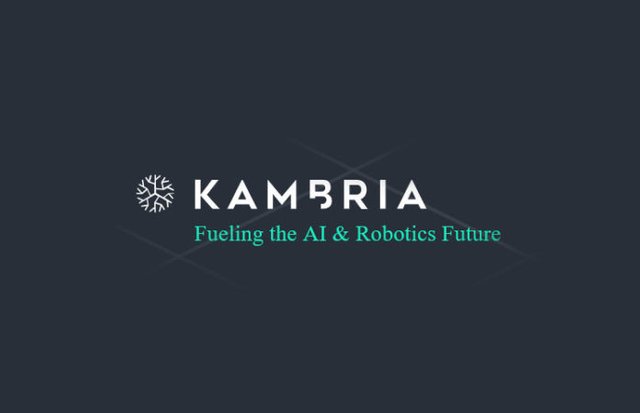
You've probably been hearing a lot more about robots and robotics over the last couple years. That's because for the first time since the 1961 debut of GM's Unimate, regarded as the first industrial robot, the field is once again transforming world economies.
Only this time the impact is going to be broader. Much broader.
Today, robots are cropping up in offices, hospitals, and schools -- decidedly non-industrial environments -- as well as in warehouses, fulfilment centres, and small manufacturing centres. More and more, they are on our roads and flying overhead.
And that's just to name a few spheres in which robots are rapidly gaining traction by doing work more efficiently, reliably, and for less money than previously possible.
That's got a lot of people excited -- and a lot of others worried. The stunning pace of development in the industry has raised lots of questions.
In 2009, a paper presented at the IEEE International Conference on Robotics and Automation (ICRA) introduced the Robotic Operating System (ROS) to the world. ROS is the first standard OS for robotics development. It also happens to be free, open source, and inherently flexible, freeing robotics developers from the time-prohibitive task of developing an OS from scratch.
There are plenty of open source users in personal computing, but because proprietary operating environments like Windows reached scale first, open source options have always been an alternative to something else.
Most of the world's top 10 robotic companies are not using open source since they are working on extraordinary robots for using them in every day of life, so-called making a friend robot which will help your daily jobs.
Furthermore, most of the companies these days focused on making robots to use at space or on Mars.
The problem here is, like in many other areas, new players are struggling more to come into play. The obvious result of this situation is monopolized market.
In another word, current progress in the robotics industry is impeded by siloed development, wasted labour, and high startup cost. As a result, the pace of robotics innovation is needlessly constrained.
This is where Kambria comes into play.
What is Kambria
Kambria is a distributed innovation platform that will attempt to foster a collaborative ecosystem to accelerate the development and advancement of next-generation robotic technology. The platform's goal is to redesign the robotics industry to enable it to deliver more affordable consumers robotics technology with more efficiency, ease and at ten times the speed compared to the existing systems.
The concept with Kambria draws their inspiration from utilizing an open robotics repository system that will comprise of high-level library and other modular hardware components. The components go into increasing the reusability and collaboration to further robotics development and interaction through the facilitation of Kambria Token (KAT).
So in another word, Kambria’s goal is to make AI and robotics development faster, cheaper and easier by fostering an open-source ecosystem.
The project is an open robotics platform that is similar to Android or Linux but would include both hardware and software components. Over time, the team will grow the platform into a network of thousands of repositories, spanning across many technology verticals, not just robotics.
All technology on Kambria will be open and free to use for personal and R&D purposes, with the option for a licensing fee for commercial and enterprise purposes. Anyone, from individual entrepreneurs to big companies, can license out the entire stack of technology without the burden of legal paperwork and negotiations with each contributor.
As both software and hardware engineering are required in robotics, Kambria is able to break down the process of innovations from getting developed, produced/manufactured, to commercializing and selling the end products. The value flow network on blockchain ensures that the licensing fees flow back fairly and transparently to each party.
Here is a diagram which shows Kambria's working mechanism.
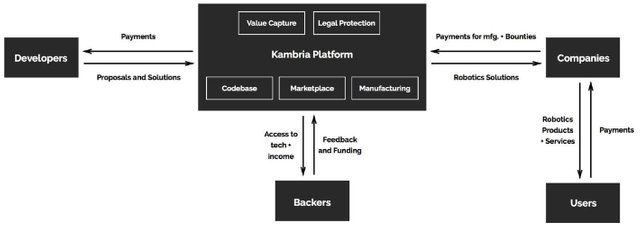
Kambria Features and Use Cases
As an open robotic repository, Kambria will become a decentralized open platform that will combine AI and robotics to accelerate the adoption of more impactful robotics.
Here are some of the features and use cases of the project.
- Establishing bounty challenges and programs where users get rewards for their successful robotics projects
- Awarding individuals or teams involved in coding or designing of robots or the technology in use.
- Manufacturers also get to earn the tokens by successfully producing the robots or the robotic parts
- The token also goes to use for fundraising for robotic projects through the community members
- Kambria allows developers access to reuse state-of-the-art, low-cost, fully-usable designs, algorithms, etc. from the Kambria codebase so that you can focus your effort on just the part you are innovating on.
- KAT also works to maintain the growth of the Kambria community and its sustainability
- The Kambria Fair Use team will protect the collective work of the community by pursuing compliance and enforcement through legal action against free-riders and violators. KAT tokens can be used for as both a signaling mechanism and a community fundraising method for legal protection.
Problems that Kambria Solves
There are tons of different problems when it comes to working on some specific areas. But most of the robotics engineers have been facing same challenges for many years now.
Here are most of the same/similar problems which is going to be solved by Kambria.
- Lack of good interfaces and abstraction layers for software, electrical, and mechanical systems.
- Lack of tools, semantics, and methods to share parts of designs in distributed fashion.
- Significant portions of expended effort are implicitly discarded.
- Cool robotic applications are slow, expensive and hard to make. Innovation is stifled.
- Slow turnaround, high minimums, and poor interfaces from “traditional” manufacturers.
Kambria Token Usage
Interactions on the Kambria platform are facilitated by KAT tokens.
Companies can use tokens to issue bounty challenges which are awarded to projects when fulfilled.
Individual or teams are rewarded with tokens for designs or code they contribute.
Manufacturers earn tokens through production of robots and robotic parts.
Here are the addition uses of KAT tokens:
- Governance: Token holders can stake their tokens to elect a set of experts who will help with governance as well as growing of the “technology trees” on Kambria.
- Attribution: Contributions into Kambria will be evaluated automatically so that attributions will be rewarded fairly.
- Protection: Community can collectively ensure licensing agreements are upheld by partners.
As KAT tokens are used to perform interactions including transactions, voting and other staking functions, the more users and more robots are being transacted on the platform, the more valuable KAT tokens should be.
Benefits of Kambria
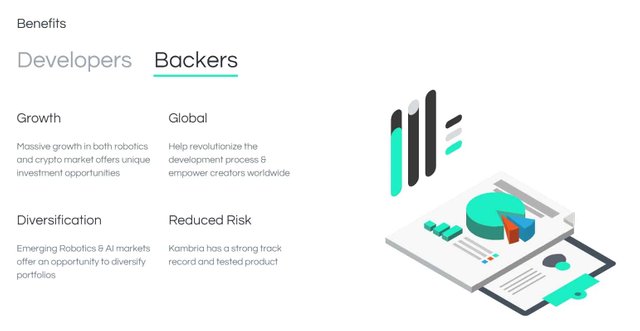
- Revenue streams with the users getting to earn the Kambria Tokens for their contribution to the platform
- Robotics Market has a growing market revenue. Kambria has the potential to be a leader in the market.
- Diversification and reduce risks since Kambria provides an opportunity for one to invest in several robotic portfolios and tested products.
##Kambria Team
Kambria has an All-Star team, you can say. I would encourage you to take a look at their team members Linkedin Profiles.
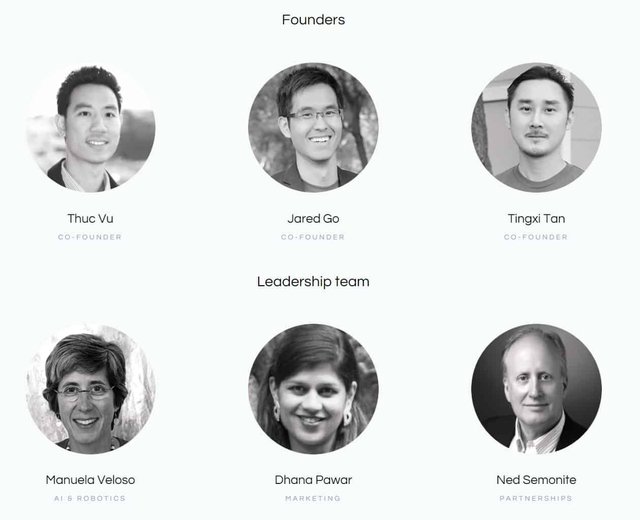
Here are the key people from team:
Thuc is a serial entrepreneur, with multiple company acquisitions, the last one by Google.
Jared was previously CTO and founding member at a networks startup. He has an extensive experience in the blockchain, AI, real-time graphics, VR, mechanical engineering and electrical engineering.
Tingxi has a background in cloud computing, network infrastructure and distributed system design. He has been active in Crypto Investment since 2010.
Manuela Veloso is the Herbert A. Simon University Professor in the School of Computer Science at Carnegie Mellon University.
Kambria Advisory Board
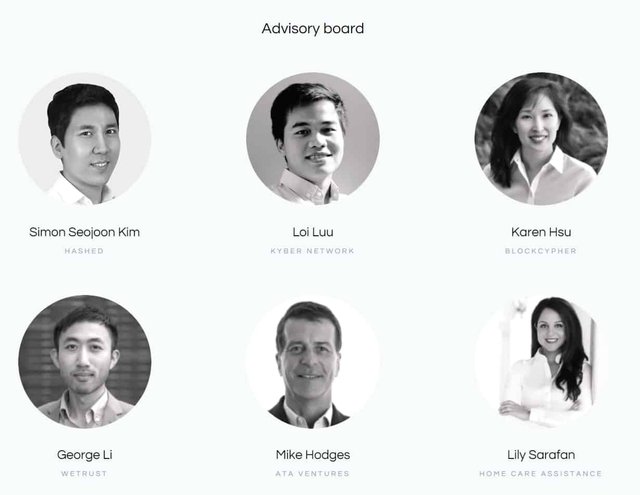

Kambria Partners
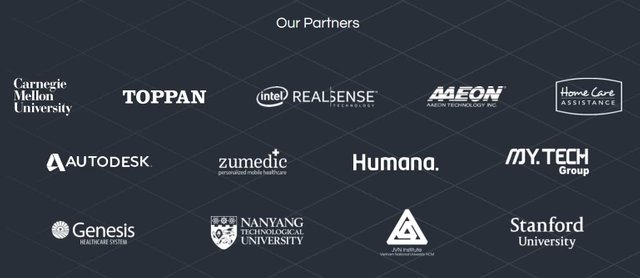
Project Roadmap
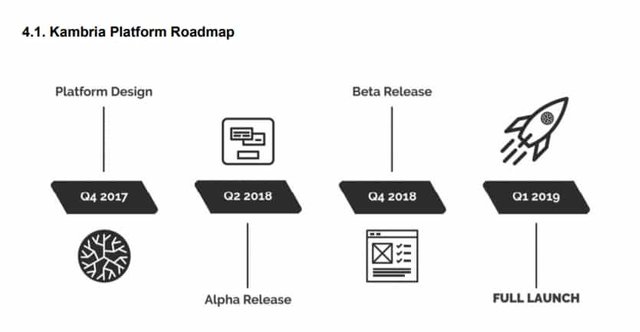
ICO Metrics
- Ticker: KAT
- Token type: ERC20
- Fundraising Goal: 19,900,000 USD
- Total Tokens: 5,000,000,000
- Available for Token Sale: 50%
There will be 5.000.000.000 tokens as total, and %50 of them will be available for crowdsale.
The team has decided $12m as Softcap and $25m for Hardcap.
Unsold tokens will be added to Robotic Community Development fund.
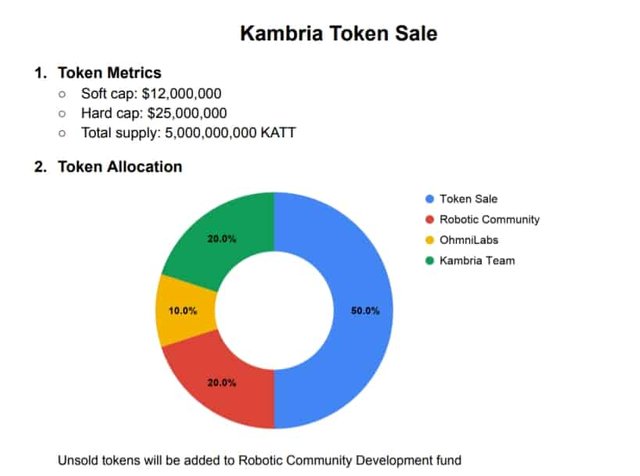
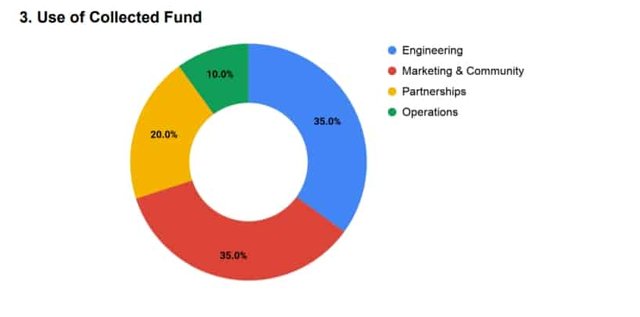
Conclusion
Kambria enables cutting edge, prize-winning technology immediately available and usable the next day by the entire robotics community. This was not possible in the robotics industry till now. The Kambria manufacturing alliance + API solves the problem of collaboration and supply chain. So much time roboticists spend is just finding parts, setting up arrangements with suppliers. This is an extremely critical problem to tackle in the robotics industry.
Kambria has already reached agreements with Stanford, CMU, and National Technology University — Singapore to build Robotics Labs together. Projects coming out of those labs will be contributed to Kambria platform
In a nutshell, Kambria is offering a collaborative mechanism to fuse blockchain technology and robotics and ultimately boost the flexibility of the sector to even the most basic of users. Their platform provides for innovative infrastructure that will ensure the future of robotics entails efficiency, regulations and best of all facilitate faster robotics integration.
Useful Links
- Kambria Website: https://kambria.io/
- Kambria Whitepaper: https://kambria.io/Kambria_White_Paper_v1.1.pdf
- Kambria Facebook: https://www.facebook.com/KambriaNetwork
- Kambria Github: https://github.com/KambriaNetwork
- Kambria Telegram: https://t.me/joinchat/F_f24g8Tl7xc9KbGGNfmHw
- Kambria Twitter: https://twitter.com/KambriaNetwork
- Kambria Bitcointalk ANN: https://bitcointalk.org/index.php?topic=3121447.0
This article was created in exchange for a potential token reward through Bounty0x.
Bounty0x Platform username: coinhaberleri